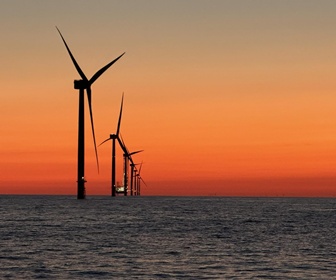The UK government has published its response to the consultation on reforms to the Contracts for Difference (CfD) scheme ahead of Allocation Round 7 (AR7), which is scheduled to open in summer 2025. The changes are intended to help deliver the aims of the Clean Power 2030 Action Plan, which sets out the pathway for low-carbon electricity generation towards the end of the decade. Several key reforms have been introduced that affect onshore wind, offshore wind and floating offshore wind, with the aim of increasing deployment while maintaining value for money for consumers.
Onshore wind
Repowering of existing onshore wind farms will be supported in AR7, allowing older projects to be upgraded with more efficient turbines. In addition, the government confirmed that a minimum commissioning window of six months will apply to eligible technologies such as onshore wind, to offer developers greater flexibility in achieving their delivery milestones.
However, the carryover of unused CfD capacity from earlier allocation rounds will no longer be permitted. Projects will have to re-enter the competition under standard rules, reducing the scope for administrative allocation of capacity and reinforcing the competitive framework.
Offshore wind (fixed-bottom)
The eligibility criteria for fixed-bottom offshore wind projects have been relaxed. Projects that do not yet have full planning consent can still apply, provided at least twelve months have passed since reaching a key planning milestone—referred to as Section 36 or Section 36A under the Electricity Act 1989—prior to the CfD application deadline. This aims to support a continuous pipeline of projects entering the auction process.
The government will also remove the option of flexible bidding for fixed-bottom offshore wind. Previously used to manage budget uncertainty, flexible bids are no longer considered necessary following improvements in budget setting and auction design.
A proposal to sequence offshore wind auctions ahead of other technologies was not adopted due to legislative timing constraints. However, the government is considering alternative, non-legislative ways of managing technology-specific competition within future allocation rounds.
Floating offshore wind
Floating offshore wind is given particular attention in the reforms, especially test and demonstration projects. The government has committed to enabling multiple floating wind projects to compete in AR7, with dedicated parameters and budget ring-fencing where appropriate.
In addition, phasing—currently applicable to fixed-bottom offshore wind—will be extended to floating projects. This allows large floating wind farms to be delivered in stages, which can reduce construction risk and facilitate integration with grid infrastructure.
Contractual refinements were also confirmed, including changes to the treatment of the Clean Industry Bonus and further technical updates to reflect the evolving role of the National Energy System Operator and changes to the definitions of foundations and decommissioning processes.
The reforms will be implemented through secondary legislation ahead of the launch of AR7. A detailed CfD Allocation Framework, including final terms and eligibility requirements, is expected to be published before the application window opens. Further consultations are anticipated on areas such as the treatment of planning-stage offshore wind.










